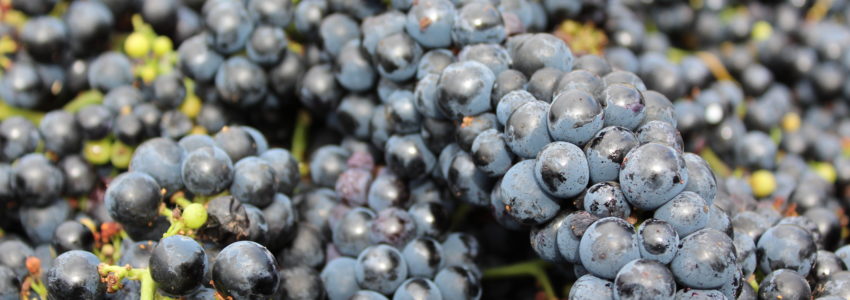Our Phil-osophy on Harvest

It’s that beautiful time of year where the leaves begin to change, temperatures start to drop and the grapes are ready to be picked. Cheers to the season of harvest!
As you may know, harvest is a long process with many steps to create the best quality wines. Our winemakers have been busy visiting vineyards, sampling grapes, crushing and everything else that harvest entails. To gain a better understanding of this process, we spoke with our head winemaker Phil to get all the details of what goes on back in the cellar this time of the year.
- Sampling/Harvesting
From the end of August to about mid-November, Phil visits various vineyards about once a week to pull samples and further observe the grapes. Some things he looks for when testing these grapes are the color of the seeds, sugar, and acid to monitor ripeness. He also looks at the overall condition of the entire vineyard checking for animal damage and/or disease pressure. In order to ensure these grapes are the highest quality before harvesting, Phil is constantly checking in.
What comes after this really depends on the kind of grape. Phil goes further into how processing and fermentation is different between white and red grape varieties.
- White Wine Processing and Fermentation
When bringing in white grapes, the juice is separated from the skins as soon as possible. The fruit is crushed and destemmed directly into the press and the juice is pressed off right away. Some exceptions to this process are aromatic varieties including Gewürztraminer, Muscat, and Traminette as well as rosé wines. For these grapes, there is a cold press period that must happen before pressing. This maximizes the floral terpenes for whites and the color for rosé.
Once all of the whites/rosés are pressed, they cold settle them to remove any solids that would negatively impact fermentation. The proper yeasts are then added based on the desired texture, flavors and aromas. The fermentation process happens in cold jacketed tanks with temperature control mechanisms. This usually takes about 2-3 weeks until completed.
- Red Wine Processing and Fermentation
The key difference between red and white winemaking is skin contact. Red grapes are crushed and destemmed into picking bins where fermentation will happen. Yeast is added to these bins after crushing the same as for whites- based on desired texture, aromas, and flavors.
Differing from whites, red wine fermentations are a lot less controlled. The high temperatures created from the yeast and carbon dioxide from the active fermentation cause the grape skins to be pushed to the top, creating a hard cap. This cap needs to be broken and submerged multiple times which has been coined the term, “punching down”. This is done manually about 2-3 times a day depending on the grape variety. As the fermentation begins to finish, a secondary fermentation is initiated and the wines are generally pressed after 10-14 days in contact with the skins.
Now that is a process! Just from this brief overview, you can see how much really goes into harvest and the beginning stages of making premium wines. We are excited for the next few months and wish for another successful harvest season. Cheers!
[Best_Wordpress_Gallery id=”8″ gal_title=”Harvest”]
